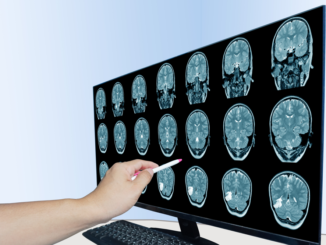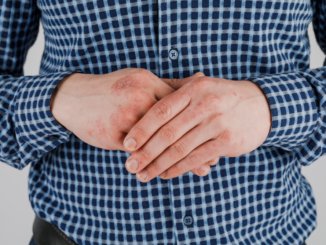
One of the primary contributors to iron deficient anemia in women is having inadequate amounts of the mineral iron. . This disorder is distinguished by a low count of red blood cells as well as a decrease in the amount of hemoglobin in the blood.
It is important to remember that hemoglobin is a protein that is found in red blood cells; and is responsible for transporting oxygenated blood to various parts of the body from the lungs.
In most cases, men are less susceptible to developing iron deficiency anemia than women are.
The high risk group includes not just women who are of childbearing age but also those who are currently carrying a baby or who are planning to do so in the near future.
Iron deficiency in women can be either transitory or persistent. It is also possible for it to develop as a consequence of the presence of a pre-existing medical condition.
The vast majority of instances can be cured by making adjustments to one’s diet and way of living, but some of them can become severe enough to jeopardize one’s life.
Table of Contents
Low Iron Symptoms in Women – Signs to look for
There is a possibility that some women who have low iron levels will not exhibit any symptoms, particularly in cases where the iron levels are either just below normal or on the verge of falling below normal.
In other situations, it’s possible that the symptoms will appear gradually, and not a single one of them might be bothersome enough on its own to warrant a trip to the doctor.
The presence of low iron in women is typically identified using standard blood tests. The following is a summary of some of the most prevalent indications and signs that a woman may have a low iron level:
- Extreme weariness is one of the most frequently observed signs of iron deficiency in females.
- Patients continue to feel fatigued virtually the entire day, but there is no underlying explanation that can be identified.
- The most obvious sign of anemia in women is skin that is unusually pale or has a tint that does not correspond to its normal tone.
- Headaches that occur frequently and a rapid heartbeat
- Spells of dizziness
- It is possible for patients’ hands and feet to feel cold and clammy to the touch, most of the time.
- Inadequate iron levels in women have been linked to hair loss.The progressive loss of iron stores in the body causes a gradual reduction in the density of the hair on the scalp, which ultimately results in the hair falling out.
- Women who are affected by this condition may also have brittle nails, increased irritability, weird and unpleasant feelings like something is crawling in their lower limbs, frequent infections, sexual dysfunction, chest pain, heavy periods, and a quick heartbeat.
Plummer-Vinson syndrome is a condition that can emerge from persistent and extended instances of iron-deficiency anaemia. Symptoms of this syndrome include weakness as well as difficulties swallowing.
Pica is a distinctive eating condition that can develop in women who are iron deficient. Pica can be caused by a lack of iron. The desire to consume non-nutritious items like dirt, paper, starch, or clay is a telltale sign of this condition.

Low Iron in Women – Causes
Having low iron levels in women can be caused by a variety of factors, some of which are given below –
- Due to the monthly loss of blood that occurs during menstruation, women are more likely than males to suffer from low levels of iron. This is because of the menstrual cycle.\
- A diet that is lacking in iron or has a low amount of iron is another main cause of low iron levels in women. It is very important for women to take this into consideration, especially if they are vegans or ladies who firmly stick to a vegetarian diet. Because of the restrictions placed on their diet, individuals do not consume sufficient amounts of foods that are high in iron.
- Iron deficiency can be the result of illnesses such as celiac disease and other conditions that have similar symptoms, which hinder the body from absorbing sufficient iron from the food it eats.
- A progressive and continuous loss of blood from the body can be caused by the presence of disorders such as colon polyps, peptic ulcers, and hiatal hernias, which increases the chance of having low iron levels in the body.
- In addition, taking some medications, such as those used in chemotherapy, can cause iron levels to drop to dangerously low levels.
- There is a hereditary predisposition for certain women to develop anaemia, which occurs when the body is unable to produce a sufficient number of red blood cells or maintain existing ones. Thalassemia, sickle cell anaemia, Fanconi anaemia, and congenital B12 mal-absorption syndrome are some of the inherited disorders that have been associated to low iron levels in women.
Low Iron in Pregnant Women
The growth and development of both the infant and the placenta are dependent on the presence of iron. In comparison to non-pregnant women, pregnant women have around fifty percent more blood in their bodies.
Because pregnancy causes an increase in blood volume, the expectant mother’s iron needs will increase. Anemia is the outcome of this higher need for iron not being supplied, which leads to the condition.
In pregnant women who have any of the following diseases, the risk of developing iron-deficiency anemia is significantly increased –
- Women who are carrying twins during the time of pregnancy
- Those who suffer from severe cases of morning sickness
- Women who do not keep a good, balanced diet
- Women who have experienced heavy menstruation
- Women who have had two or more pregnancies in a short period of time
Treatment for women with low iron levels
Iron supplements are often prescribed by doctors for women who have low iron. If it is necessary, the doctor will additionally investigate potential underlying reasons.
Iron supplements are taken to replace the iron that is lost or used up by the body. In order to increase the likelihood of the body absorbing the iron that is contained in the supplements, you could be required to comply with the directions that are stated below:
The absorption of iron is improved by vitamin C. Therefore, medical professionals may recommend taking the supplements in conjunction with vitamin C tablets or drinking a glass of orange juice.
Though ideally iron supplements should be taken on an empty stomach, one may experience stomach upset issues. In that case, you can those supplements with food.
Low iron levels in women are not something that can be remedied quickly. You will probably need to maintain the dosage for a significant number of months in order to compensate for the deficiency of iron in the body. However, the symptoms of low iron in women can typically improve after a week’s time of treatment.
Additionally, it is important to perform routine checks on the amount of iron in the blood.
Treatment of the underlying reasons of low iron symptoms in women
If low iron levels in women do not improve after taking iron supplements, a doctor may check for the presence of an underlying cause, which may be addressed in the following ways, depending on the specifics of the case:
It is possible for oral contraceptives and other drugs to lessen the severity of excessive menstrual bleeding.
Surgical removal is an option for conditions such as fibroids, tumors, or bleeding polyps.
Antibiotics and various other medications can be used to treat peptic ulcers.
Blood transfusions, which rapidly restore both hemoglobin and iron levels, are the treatment of choice for severe cases of iron deficiency anaemia.
Diet for Low Iron Symptoms in Women
Low iron levels in women can also be remedied by making dietary changes that include foods that are rich in iron.
These include pork, red meat, poultry, shellfish, and iron-rich breads, cereals, and pastas. One cannot negate the importance of dark green leafy vegetables like spinach, beans, eggs, peas and dried fruits like raisins and apricots as abundant sources of iron.
For better iron absorption, you can add diet rich in Vitamin C like oranges, melons, strawberries, kiwis, grapefruit, broccoli, leafy green vegetables, tomatoes and peppers.
Authoritative Clinical References
Iron Deficiency Anemia -https://pubmed.ncbi.nlm.nih.gov/28189173/





Be the first to comment